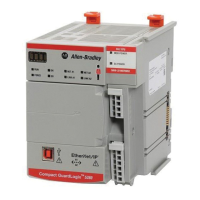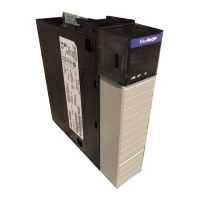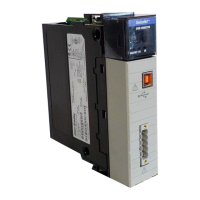Behavior models used in CIP Motion
78 Rockwell Automation Publication MOTION-RM003I-EN-P - February 2018
A typical equation for the notch filter is as follows:
In this equation, Q represents the sharpness of the notch. In most
implementations, the sharpness, Q, is typically hard-coded in the device. The
attenuation depth of the notch filter is infinite.
See also
Torque Limiters on page 78
Torque Control Behavior on page 71
After undergoing friction compensation and filtering the Torque Reference signal
passes through a limiter to produce the Limited Torque Reference signal. The
Torque Limiter applies a torque limit to the signal that is based on the sign of the
torque reference signal input and the state of the axis.
During normal operation it is the Torque Limit – Positive and Torque Limit –
Negative attributes, set by the user, that are applied to the torque reference signal.
When the axis is commanded to stop as part of a disable request or major fault
condition, the device applies the Stopping Torque Limit.
Also included with the torque limiter is a built-in Torque Rate of Change Limit.
This feature limits the rate of change of the torque reference output.
See also
Torque to Current Scaling on page 78
Torque Control Behavior on page 71
The final result of all this torque signal filtering, compensation, and limiting
functionality is the Filtered Torque Reference signal. When the signal is scaled by
the reciprocal of the Torque Constant of the motor, 1/Kt, it becomes the torque
producing Iq Current Command signal to the current loop.
Ideally, the relationship between motor torque and motor current is independent
of position, time, current, and environmental conditions, the 1/Kt scaling has a
nominal value of 1, so that 100% rated torque translates to 100% rated current. In
practice, this may not be the case. Compensation can be applied to the 1/Kt value
to address these issues at the drive vendors' discretion.
Torque to Current Scaling

